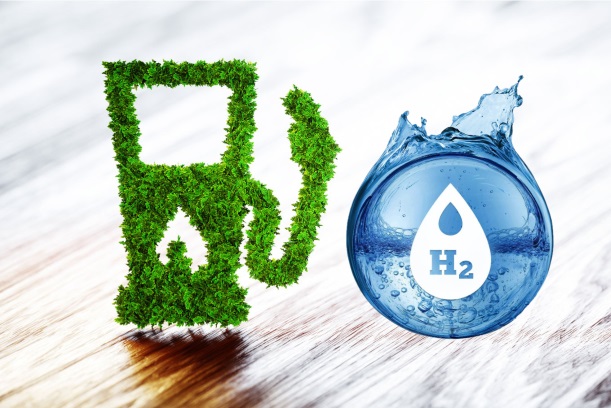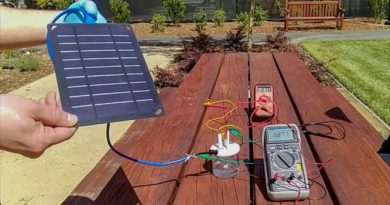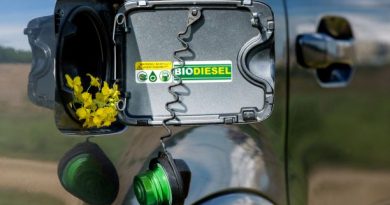Biofuel Expert Says Hydrogen Fuel is the ‘Only Alternative’

Dr. P K Bose is the former director of School of Automotive Engineering & Professor, Department of Mechanical Engineering Jadavpur University and former director of National Institute of Technology Agartala, Tripura. He is a biofuel expert and has been a pioneer in this field since inception. An edited transcript of his interview with Iamrenew.
Iamrenew: Tell us about the journey of the biofuel industry so far in India, what has been the trajectory of growth in the field?
Dr. Bose: In 1995, we started the work on bio-fuel in eastern part of India. In fact, we are the first institute which started research on biofuel/biodiesel in this part of India. I extended my consultancy expertise to Emami group for producing bio-diesel in their factory.
The biofuel business in India is expected to touch Rs 50,000 core by 2022 based on the demand of petrol and diesel in the country. Currently, bio-diesel and ethanol industry in India is worth Rs 6000 crore.
National Biofuel Mission 2003 observed the following
| Year | Petrol demand (Million Tonnes) | Fuel ethanol demand (Million Tonnes) | |
| 5% | 10% | ||
| 2008-09 | 11.25 | 0.56 | 1.13 |
| 2011-12 | 14.37 | 0.72 | 1.44 |
| 2016-17 | 21.61 | 1.08 | 2.16 |
| 2020-21 | 29.94 | 1.50 | 2.95 |
With bamboo to ethanol conversion, India’s biofuel Industries is expected to explode into a $15 billion market from non-molasses sources.
Bio-diesel production is rising in India as well as in other countries. The major reason behind the phenomena is the limited amount of petroleum product reservoirs.
The fast depleting reservoir of fossil fuel has set off the alarm bell. However, searching of alternates has been initiated long-time back and recently had also started to yield positive results. The sustained and renewable energy sources include solar, wind, biomass, sea-tide, geo-thermal, nuclear etc. As we are more comfortable using energy from fossil fuel, we would like to replicate the fuel from available renewable sources. So, we can use the fuel in the existing systems (automobiles, industries etc.) without altering the major components. Hence, the bio-diesel gained quicker popularity as a source of renewed energy among the planners, researchers and users.
Biofuel potential from agricultural crops in India
The blending mandate of 5% ethanol with gasoline in nine states of India in 2003 was enhanced to include 20 states in 2006. In 2010, the National Policy on Biofuels approved a target 20% blending with biofuels by 2017.
| Alcohol requirement (M ltrs) | 2011-12 | 2012-13 | 2013-14 | 2014-15 |
| Portable Sector | 1550 | 1660 | 1780 | 1900 |
| Industrial Sector | 1100 | 1160 | 1210 | 1280 |
| Blending (5%) | 1090 | 1150 | 1200 | 1260 |
| Total alcohol requirement | 3740 | 3970 | 4190 | 4440 |
| Highest expected availability | 2400 | 2400 | 2400 | 2400 |
| Deficit | 1340 | 1570 | 1790 | 2040 |
The leaders in biofuel processing in India are D1 Oil plc, RIL, Godrej Agrovet, Emami Group, Aatmiya Bio-fuels Ltd., Godrej Oelo chemical Ltd, Jain Irrigation system Ltd., Nova Bio-fuel Pvt. Ltd., and Sagar Jatropha oil extraction Pvt. Ltd.
Iamrenew: Can you help us understand how biofuels can lower the emission of carbon, sulphur and other harmful or toxic substances?
Dr. Bose: The biodiesel molecules are simple hydrocarbon chains, containing no sulphur, or aromatic substances associated with fossil fuels.
The superior lubricating properties of biodiesel increases frictional engine efficiency. The higher cetane number of biodiesel compared to petro-diesel indicates potential for higher engine performance. Tests have shown that biodiesel has similar or slightly higher fuel consumption, horsepower, and torque and haulage rates as conventional diesel. The total absence of sulphur makes it suitable for use in metro-cities and free the atmosphere from acid rain.
Their higher flash point makes them safer to store. However, long-term storage presents a problem of bio-degradation. They contain higher amount of oxygen (up to 10 percent) that ensures more complete combustion of hydrocarbons.
Biodiesel almost completely eliminates lifecycle carbon dioxide emissions. When compared to petro-diesel it reduces emission of particulate matter by 40 percent, unburnt hydrocarbons by 68%, carbon monoxide by 44 percent, sulphates by 100 percent, polycyclic aromatic hydrocarbons (PAHs) by 80 percent, and the carcinogenic nitrated PAHs by 90 percent on an average. The use of biodiesel complements the working of the catalyst due to absence of sulphur and can help a current BHARAT STAGE I Engine to attain the BHARAT STAGE II standards. Studies at various Laboratories, however, show higher NOx emission from Jatropha Bio-Diesel which needs further study.
- Biodiesel has high cetane.
- In built Oxygen content
- Burns fully
- Has no Sulphur
- No Aromatics
- Complete CO2 cycle
B20 emissions reductions compared to petroleum diesel:
- Carbon monoxide -20 percent
- Unburned hydrocarbons -30 percent
- Particulate matter -22 percent
- Sulfates -20 percent
- NPAH -50 percent
| Emission | Reduction (percent) |
| CO | 67 |
| HC | 30 |
| PM | 68 |
| SOOT | 50 |
| PAH | 85 |
| CO2 | 100 |
| NOX | +/-2–6 |
| S | 80-100 |
source: Good Biodiesel presentation
Iamrenew: Do the engines need any sort of modification to accommodate or use biofuel blended petrol/gasoline or diesel?
Dr. Bose: Blending of biofuels such as ethanol with gasoline (Petrol) from 5 percent to 20 percent does not need any major modification of the engine. Beyond that, a comprehensive study is required in connection with the effect of ethanol on different parts of the engine as ethanol contains water. In case of bio-diesel 5 percent, 10 percent even upto 20 percent blending of biodiesel with petro-diesel does not need any major modification of the engine as water content in bio-diesel does not have much effect on engine parts.
But to run the engine with 100 percent bio-diesel needs rigorous experimentation. To study the effect of 100 percent bio-diesel on piston, piston rings, combustion chamber, and injector, a few thousand hours running is required to see the effect of water content of bio-diesel on different parts of the engine. Water content of bio-diesel could have been the source of rusting on different parts of the engine.
Iamrenew: Can you tell us how much the carbon emission is reduced by burning 1 litre of biofuel blended (5 percent-10 percent) gasoline/petrol?
Dr. Bose: Because of their clean burning characteristics
- Percentage of unburned hydrocarbon is less in the exhaust
- Percentage of CO is also less in the exhaust
- Soot formation does not occur due to low proportion of carbon in alcohol
In comparison to gasoline, the gasoline-ethanol blend has very high latent heat of vaporization. Thus within limits, the presence of ethanol in the blend, with its greater evaporative cooling effect, reduces the charge temperature and thus usually improves the volumetric efficiency. For a given air-fuel ratio CO in exhaust decreased.
Changing with ethanol blends without carburettor adjustment results in less CO in the exhaust than with gasoline as fuel. CO varies from 10 to 60 percent depending on air-fuel ratio. The air-fuel ratio between 13.8 to 15 by weight can completely eliminate emission of CO upto an addition of 10 percent ethanol in the blend.
Iamrenew: What are the economic and practical reasons according to you that have so far created hurdles for the adoption of biofuels in India?
Dr. Bose: In India, most of the manufactures produced ethanol from sugarcane and sugarcane can also require to produce liquor.
To produce bio-diesel – vegetable oil needs esterification which needs alcohol like ethanol etc. Using ethanol for producing liquor is more profitable than using it for producing bio-diesel. But ethanol can be produced from other resources. In fact, due to pressure from sugar baron lobby, the government rolled back from either mixing of ethanol with gasoline even up to 5 percent probably in the year of 2005. Similarly, for producing biodiesel, ethanol is required for esterification of vegetable oil. Due to non -supply of ethanol, biodiesel production was also hampered.
Iamrenew: What is the future of biofuel and do you think there are other fuels that you think will come up in India and elsewhere?
Dr. Bose: Yes, the fuel hydrogen is the only alternative throughout the world in the future.
Iamrenew: Tell us about hydrogen run vehicles. How far is the development of vehicles and companies that are foraying into hydrogen run vehicles?
Dr. Bose: Hydrogen is the only fuel which does not emit any hazardous pollutants other than water / water vapor. Hydrogen may be used either for developing fuel cell or it may be used as gaseous fuel for ICE. In fact, hydrogen is the future fuel for ICE based auto industry. So the question raised, phasing out of ICE vehicles, is ruled out if hydrogen is used as ICE vehicle fuel. In fact, the government is thinking of phasing out of ICE vehicle by substituting electrical vehicle. Electrical vehicle also pollutes the environment during charging. The acceleration, speed etc, of electrical vehicle, are not comparable with hydrogen run vehicle.
In India, auto manufacturers like Mahindra & Mahindra have developed a hydrogen car. Many other foreign companies are planning to introduce hydrogen / hydrogen fuel cell-based cars in the market.
Iamrenew: Is the government decision to completely phase out ICE vehicles feasible?
Dr. Bose: No. As the electrical vehicle can not compete with the hydrogen/ hydrogen fuel cell cars so far acceleration /speed, etc. are concerned.
Iamrenew: What should be the suggestions that policymakers must look into while making India’s transportation plans in the future?
Dr. Bose: The policymakers should not take a decision of introducing a new technology removing other technology all of a sudden. In fact, politicians are thinking of making the atmosphere clean by introducing electrical vehicles but they too pollute in other ways. It is debatable whether it may be more or less. It is a transitional phase and before introducing new technology, proper infrastructure is required. As I have mentioned, ICE vehicles cannot be phased out if hydrogen is fuel for the future. So the Indian transportation plan should be the combination of different technologies during this transitional phase.
 Prof. (Dr.) P.K. Bose. Reach Dr. Bose via pkb32@yahoo.com or pkbdirector@gmail.com
Prof. (Dr.) P.K. Bose. Reach Dr. Bose via pkb32@yahoo.com or pkbdirector@gmail.com
(This disclaimer informs readers that the views, thoughts, and opinions expressed in the text belong solely to the author. They do not purport to reflect the opinions or views of Iamrenew.com)




